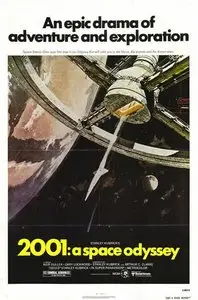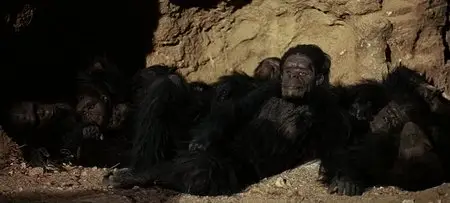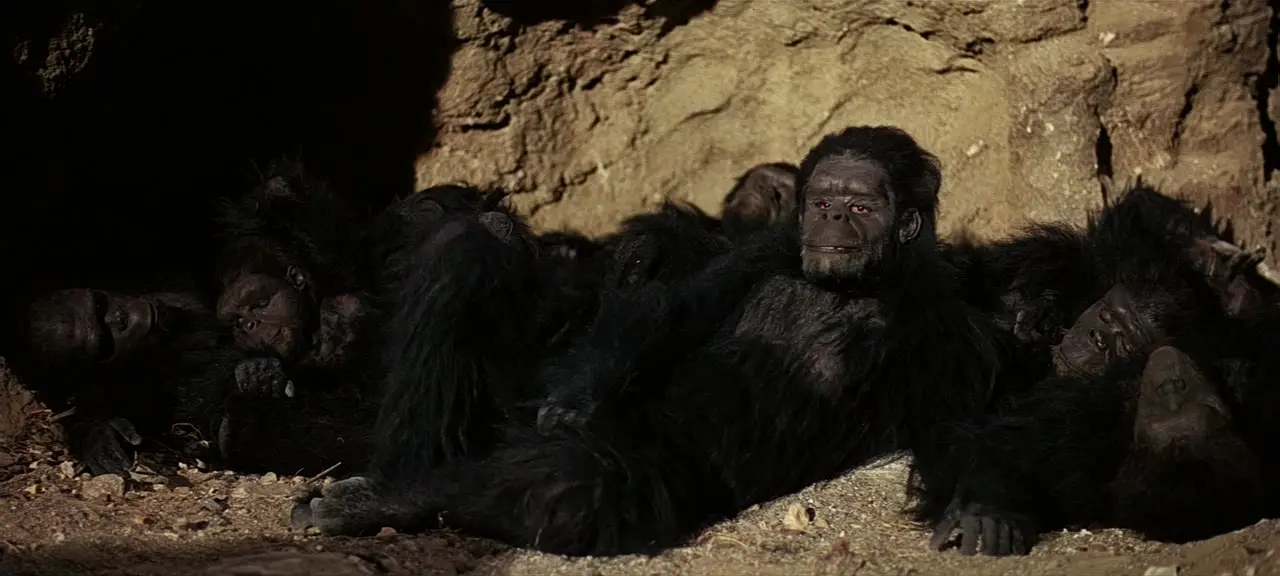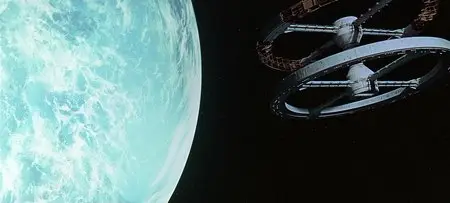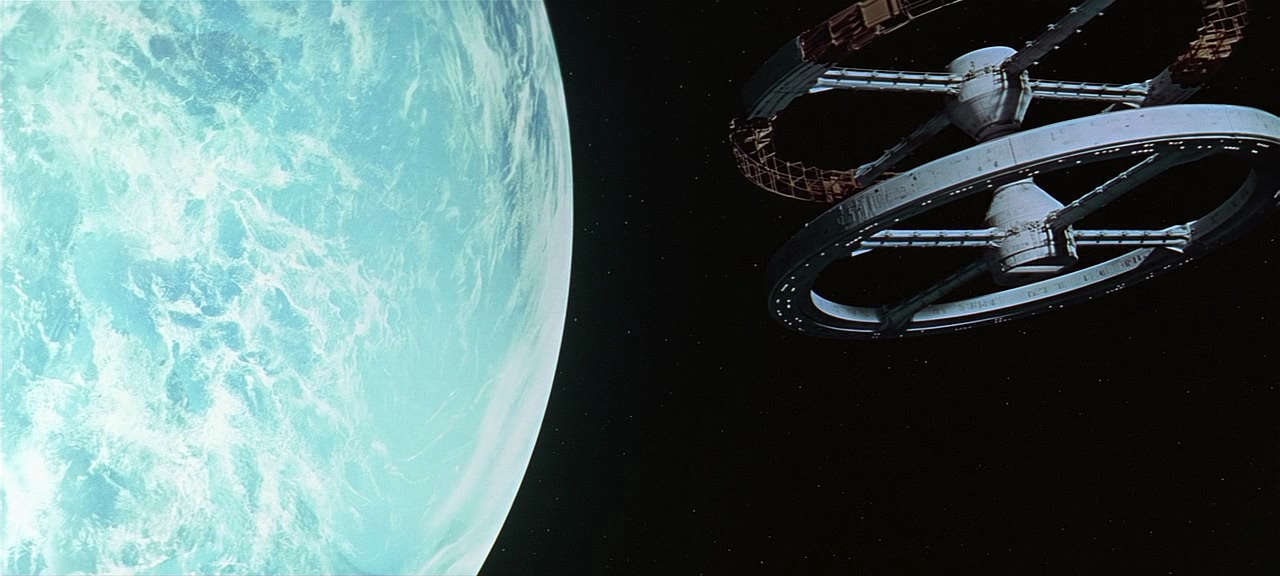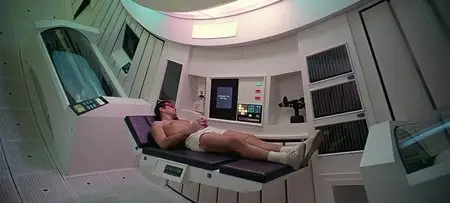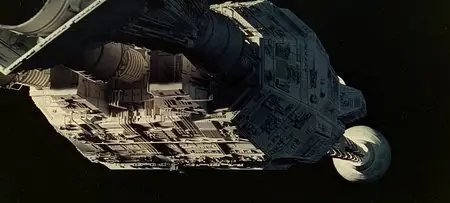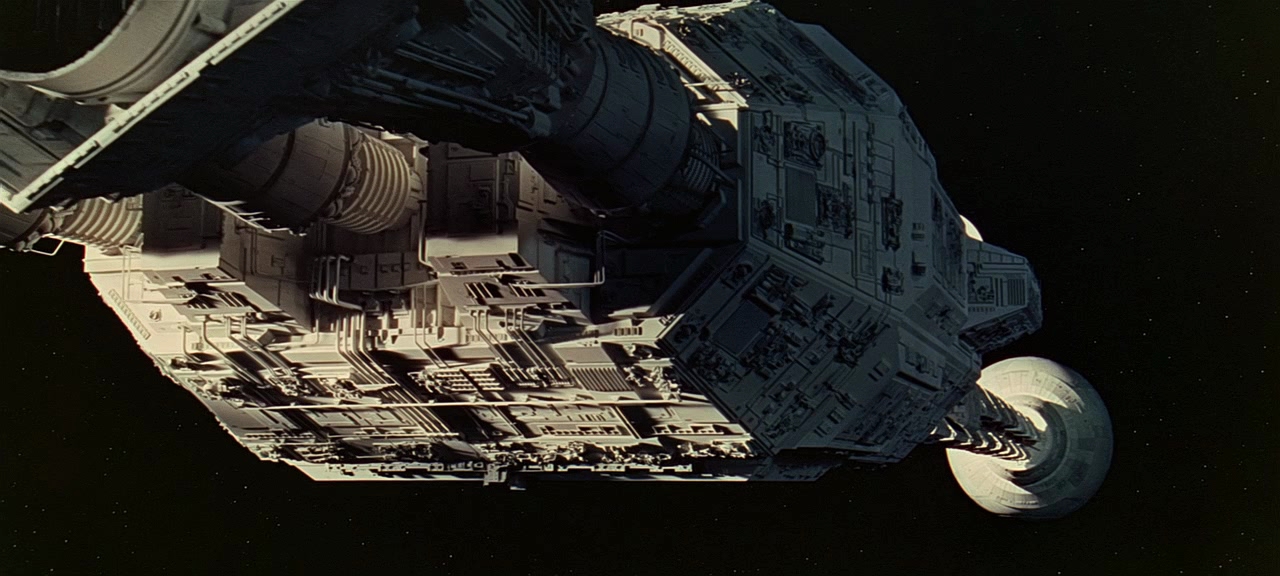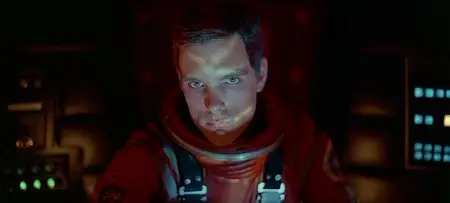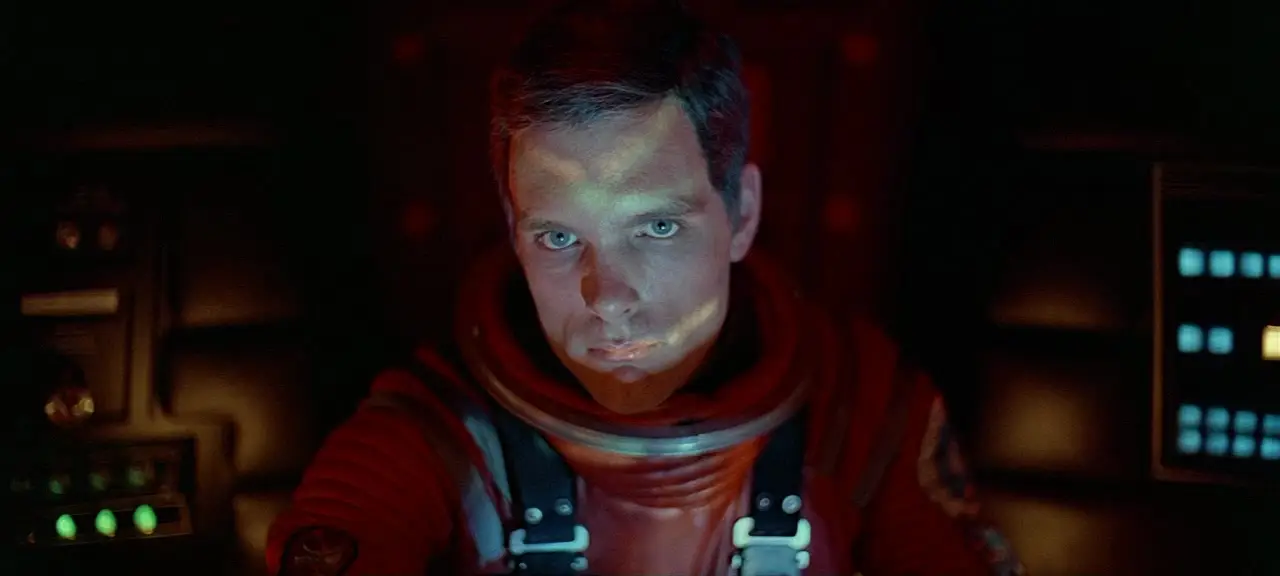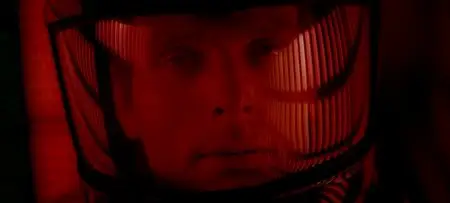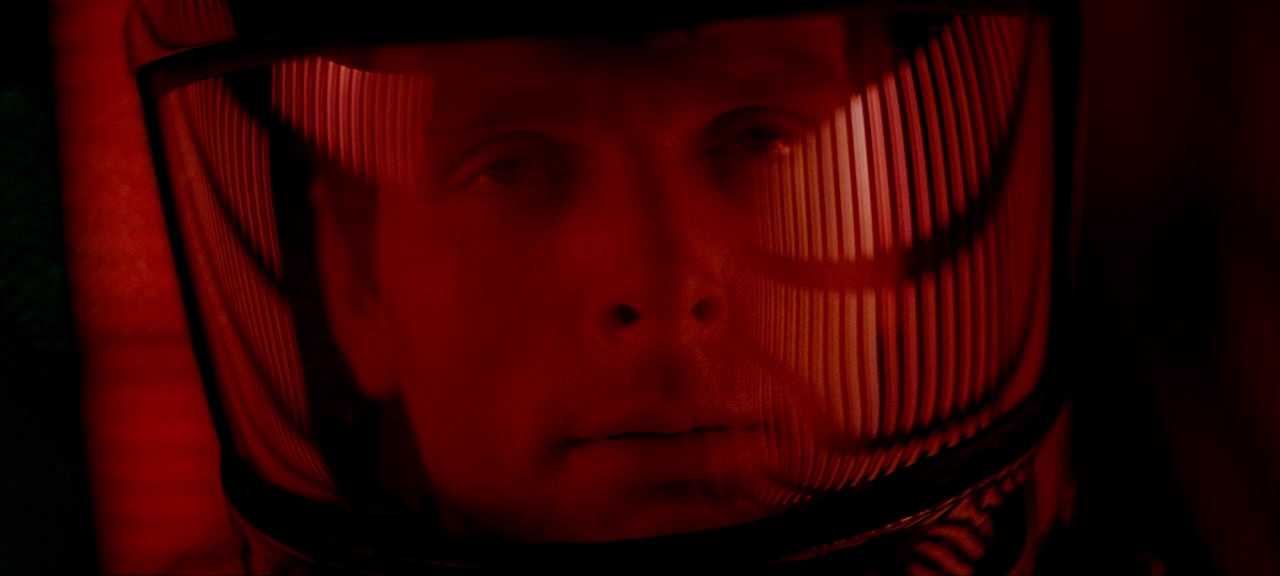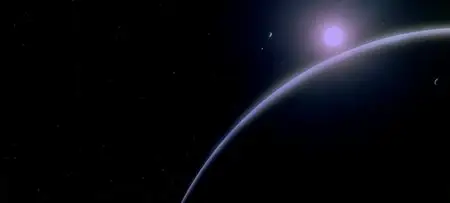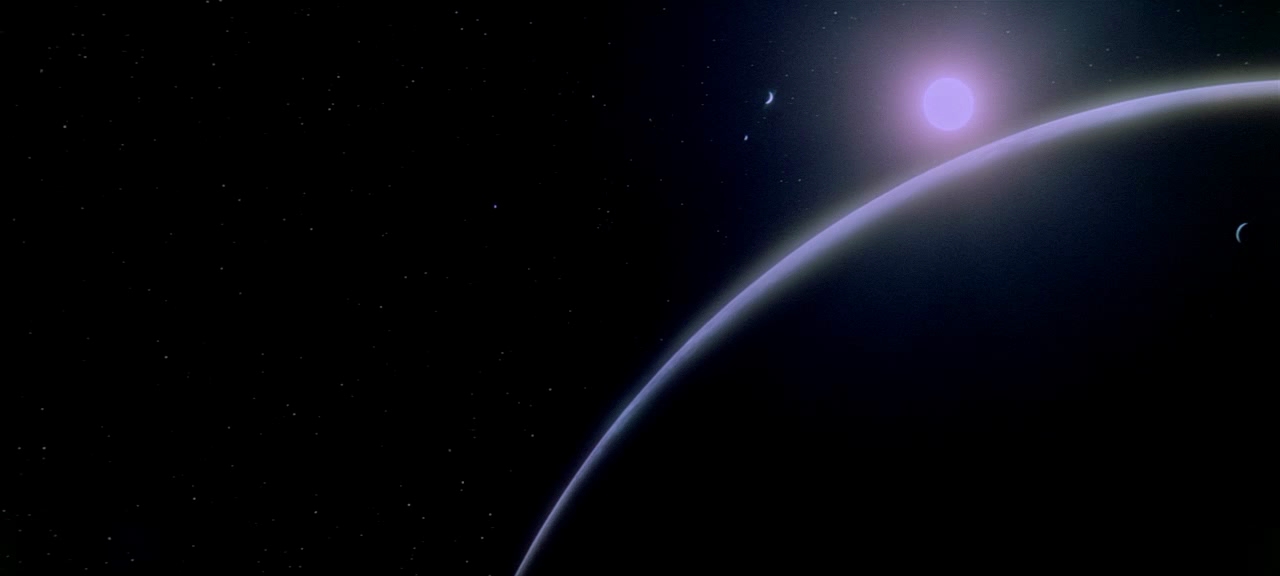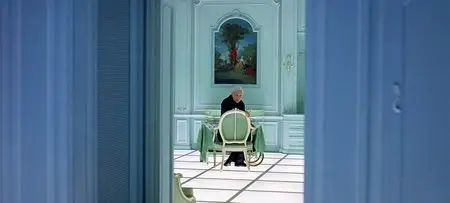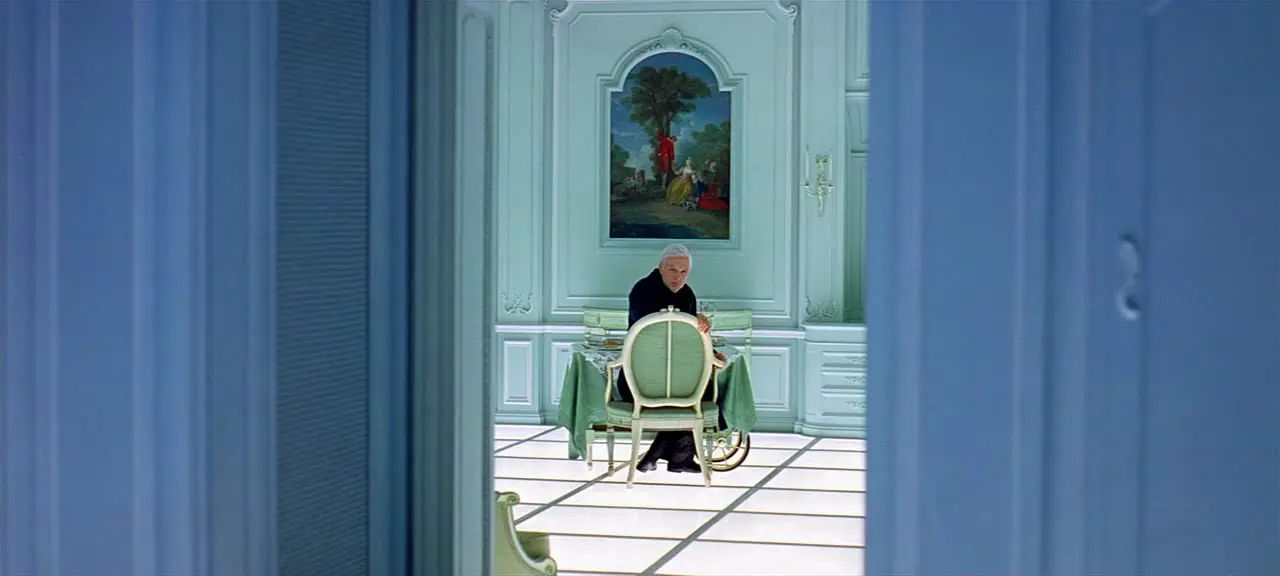2001: A Space Odyssey (1968)
720p BluRay | English | avi | 1280x576 | Video: Xvid @ 3005 Kbps | Audio: AC-3 @ 448 Kbps | 149 mins | 3.6 GB
Subs: Danish, Dutch, English, Finnish, French, German, Italian, Norwegian, Portuguese, Spanish, Swedish
Director: Stanley Kubrick | Writers: Stanley Kubrick, Arthur C. Clarke | Stars: Keir Dullea, Gary Lockwood, William Sylvester
Genre: Adventure / Mystery / Sci-Fi
720p BluRay | English | avi | 1280x576 | Video: Xvid @ 3005 Kbps | Audio: AC-3 @ 448 Kbps | 149 mins | 3.6 GB
Subs: Danish, Dutch, English, Finnish, French, German, Italian, Norwegian, Portuguese, Spanish, Swedish
Director: Stanley Kubrick | Writers: Stanley Kubrick, Arthur C. Clarke | Stars: Keir Dullea, Gary Lockwood, William Sylvester
Genre: Adventure / Mystery / Sci-Fi
"2001" is a story of evolution. Sometime in the distant past, someone or something nudged evolution by placing a monolith on Earth (presumably elsewhere throughout the universe as well). Evolution then enabled humankind to reach the moon's surface, where yet another monolith is found, one that signals the monolith placers that humankind has evolved that far. Now a race begins between computers (HAL) and human (Bowman) to reach the monolith placers. The winner will achieve the next step in evolution, whatever that may be.
Despite initially receiving mixed reviews, 2001: A Space Odyssey is today recognized by many critics and audiences as one of the greatest films ever made; the 2002 Sight & Sound poll of critics ranked it among the top ten films of all time. It was nominated for four Academy Awards, and received one for visual effects. In 1991, it was deemed "culturally, historically, or aesthetically significant" by the United States Library of Congress and selected for preservation in the National Film Registry. On 25 June 2010 a version specially remastered by Warner Bros without the music soundtrack opened the 350th anniversary celebrations of the Royal Society at Southbank Centre in co-operation with BFI, with the score played live by the Philharmonia Orchestra and Choir.
Stanley Kubrick initially approached Arthur C. Clarke by saying that he wanted to make "the proverbial good science-fiction movie". Clarke suggested that his story "The Sentinel" (1948) about finding an alien artifact on the moon, would provide a suitable premise. Clarke had written it for a BBC competition, but it didn't even make the shortlist. The movie's opening scene has elements in common with Clarke's story "Encounter at Dawn," and the ending is arguably related to his beloved novel "Childhood's End." The screenplay was written primarily by Kubrick and the novel primarily by Clarke, each working simultaneously and also providing feedback to the other. As the story went through many revisions, changes in the novel were taken over into the screenplay and vice versa. The official records say that the screenplay was written in 58 days (13 October 1965-9 December 1965). Shooting began with the "Monolith on the Moon" scene on 29 December 1965. It was undecided whether film or novel would be released first; in the end it was the film. Kubrick was to have been credited as second author of the novel, but in the end was not. It is believed that Kubrick deliberately withheld his approval of the novel as to not hurt the release of the film.
Clarke and Kubrick wrote the novel and screenplay simultaneously, but while Clarke ultimately opted for clearer explanations of the mysterious monolith and the Star Gate, Kubrick chose to keep the film mysterious and enigmatic with minimal dialogue in order to convey what many viewers have described as a powerful sense of the sublime and numinous, without specific explanations of events. "2001", Kubrick says, "is basically a visual, nonverbal experience" that avoids the spoken word in order to reach the viewer's subconscious in an essentially poetic and philosophic way. The film is a subjective experience which "hits the viewer at an inner level of consciousness, just as music does, or painting".
Originally, Stanley Kubrick had Stuart Freeborn create a primitive but more human-like makeup for the actors playing early man, but he couldn't find a way to photograph them in full length without getting an X-rating from the MPAA, since they had to be naked. So Kubrick went with the hairy monkey model instead. With the exception of two baby chimpanzees, all were played by humans in costume. Freeborn and his wife Kathleen Freeborn used comic actor Ronnie Corbett as a makeup model, but he did not appear in the final film. Daniel Richter, who plays the ape moon watcher, choreographed most of these scenes. Early viewers of the movie wondered where Kubrick obtained such well-trained apes. It was later joked that "2001" lost the Best Makeup Academy Award to John Chambers for Planet of the Apes (1968) because the judges didn't realize the 2001 apes were really people, but there was no nomination list at all, as the award was not created until 1981 - Chambers' award was merely honorary.
Arthur C. Clarke and Stanley Kubrick disagreed on what HAL's birthday should be. Kubrick wanted HAL to be about the age of a child, so his death would have more emotional impact. Clarke insisted such an old computer would not be used for an important mission. In the book, HAL's age was four years (12 January 1997), while in the movie it was nine years (12 January 1992). This disagreement resurfaced nearly thirty years later when film critic Roger Ebert held a birthday party for HAL 9000 by screening 2001 in Urbana, Illinois in 1997, the date and place of HAL's birth in the novel (Ebert was also born in Urbana). Clarke and Kubrick were both invited. Clarke accepted his invitation and made an appearance at the festivities via satellite, but Kubrick declined, stating that they missed HAL's birthday in 1992. Another inconsistency in this scene is the name of HAL's first instructor. It is Mr. Langley in this movie but is Dr. Chandra in all other books and movies in this series. Since HAL is saying all this while being shut down, this could be interpreted as a result of memory failure.
According to Arthur C. Clarke, Stanley Kubrick wanted to get an insurance policy from Lloyd's of London to protect himself against losses in the event that extraterrestrial intelligence were discovered before the movie was released. Lloyd's refused. Carl Sagan commented, "In the mid-1960s, there was no search being performed for extraterrestrial intelligence, and the chances of accidentally stumbling on extraterrestrial intelligence in a few years' period was extremely small. Lloyd's of London missed a good bet."
According to Kubrick biographer Jan Harlan, the director was adamant the trims were never to be seen, and that he "even burned the negatives"—which he had kept in his garage—shortly before his death. This is confirmed by former Kubrick assistant Leon Vitali: "I'll tell you right now, okay, on Clockwork Orange, The Shining, Barry Lyndon, some little parts of 2001, we had thousands of cans of negative outtakes and print, which we had stored in an area at his house where we worked out of, which he personally supervised the loading of it to a truck and then I went down to a big industrial waste lot and burned it. That's what he wanted."
IMDB info
Screenshots (click to enlarge to original size):
aso720p-shk.avi MD5: B7ACCDDD2DC1113D6E38690E409B9D6D
Single link, Filesonic, 3.6 GB:
aso720p-shk.avi
Subs
254 MB volumes, Filesonic:
Part 01 | Part 02 | Part 03 | Part 04 | Part 05
Part 06 | Part 07 | Part 08 | Part 09 | Part 10
Part 11 | Part 12 | Part 13 | Part 14 | Part 15
254 MB volumes, Uploading:
Part 01 | Part 02 | Part 03 | Part 04 | Part 05
Part 06 | Part 07 | Part 08 | Part 09 | Part 10
Part 11 | Part 12 | Part 13 | Part 14 | Part 15
254 MB volumes, Turbobit:
Part 01 | Part 02 | Part 03 | Part 04 | Part 05
Part 06 | Part 07 | Part 08 | Part 09 | Part 10
Part 11 | Part 12 | Part 13 | Part 14 | Part 15
2010: The Year We Make Contact (1984)
Welcome to my blog!
aso720p-shk.avi
Subs
254 MB volumes, Filesonic:
Part 01 | Part 02 | Part 03 | Part 04 | Part 05
Part 06 | Part 07 | Part 08 | Part 09 | Part 10
Part 11 | Part 12 | Part 13 | Part 14 | Part 15
254 MB volumes, Uploading:
Part 01 | Part 02 | Part 03 | Part 04 | Part 05
Part 06 | Part 07 | Part 08 | Part 09 | Part 10
Part 11 | Part 12 | Part 13 | Part 14 | Part 15
254 MB volumes, Turbobit:
Part 01 | Part 02 | Part 03 | Part 04 | Part 05
Part 06 | Part 07 | Part 08 | Part 09 | Part 10
Part 11 | Part 12 | Part 13 | Part 14 | Part 15
2010: The Year We Make Contact (1984)
Welcome to my blog!


